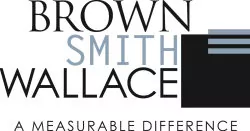This May marks the second anniversary of the publication of the landmark revenue recognition standard. But U.S. companies and their auditors have a lot of work to do before it goes into effect. Here's an overview of what's happened over the last two years — and the details that still need to be worked out.
Major changes ahead
In 2014, the Financial Accounting Standards Board (FASB) published Accounting Standards Update (ASU) No. 2014-09, Revenue from Contracts with Customers (Topic 606), which will supersede the previous hodgepodge of revenue recognition requirements. Under the new rules, companies worldwide will follow a single set of principles for reporting revenue from customer contracts.
The principles-based guidance will require companies to follow five steps when deciding how and when to recognize revenues:
- Identify a contract with a customer.
- Separate the contract's commitments.
- Determine the transaction price.
- Allocate a price to each promise.
- Recognize revenue when or as the company transfers the promised good or service to the customer, depending on the type of contract.
In some cases, the updated guidance will result in earlier revenue recognition than in current practice. This is because the new standard will require companies to estimate the effects of sales incentives, discounts and warranties.
The breadth of change that will be experienced depends on the industry. Companies that currently follow specific industry-based GAAP, such as software, real estate, asset management and wireless carrier companies, will feel the biggest changes. The new rules also provide guidance for transactions that weren't addressed completely, such as service revenue and contract modifications.
Nearly all companies will be affected by the expanded disclosure requirements. The new rules call for detailed footnote disclosures that break down revenues by product lines, geographic markets, contract length, services and physical goods.
Exceptions to the new rules include insurance contracts, leases, financial instruments, guarantees and nonmonetary exchanges between entities in the same line of business to facilitate sales. These transactions remain within the scope of existing industry-specific GAAP.
Implementation challenges
In April 2015, the FASB decided to delay implementation of the converged revenue recognition standard by a year. The effective date was originally set for 2017, but many companies told the FASB that they needed more time to implement the new guidance because of the breadth of change and importance of revenue in a financial statement.
While the FASB heard many requests from U.S. companies, only four companies asked the International Accounting Standards Board (IASB) for an extension of the effective date for its new revenue recognition standard. Foreign companies are generally more familiar with the principles-based accounting employed by the new revenue standard.
To help facilitate the implementation processes, the FASB and IASB established the joint Transition Resource Group (TRG) for revenue recognition. So far, it's met seven times to help clarify major stumbling blocks and avoid inconsistent application of the revenue standard once it becomes effective. The TRG doesn't issue guidance, but, after each TRG meeting, the FASB decides what actions, if any, it will take on a particular issue.
Principal vs. agent considerations
Some recent clarifications of the revenue recognition standard relate to principal vs. agent determinations. The FASB and IASB began discussing this issue with the TRG shortly after the revenue standard came out in 2014. TRG members were particularly concerned with sales where a principal supplier can't immediately recognize a sale because it's dependent upon the agent for setting the price when the sale is made or contract signed.
These discussions resulted in the publication of ASU No. 2016-08, Revenue from Contracts with Customers (Topic 606): Principal versus Agent Considerations (Reporting Revenue Gross versus Net), in March 2016. The amendments apply to sales that involve two or more suppliers to a customer, where one supplier controls the good or service being sold and the other supplier or suppliers are agents and collect fees or commissions for arranging the sales. Examples include 1) online sales in which a business maintains a website from which consumers may purchase goods from multiple suppliers, and 2) custom orders that a supplier outsources to a contract manufacturer to make the product.
The revised guidance clarifies how a business determines if it is a principal or an agent. Sellers must identify the good or service being sold and their role in the sale. In doing so, they should focus on the good or service being sold and not the promise to transfer the good or service, or what the board calls a "performance obligation," in part because stressing the promise related to the sale would be confusing for an agent.
Work in progress
Based on discussions during TRG meetings, the FASB is currently drafting proposals to clarify the "collectibility" threshold contained in the revenue recognition standard and provide a practical expedient for footnote disclosures on royalties received for licenses of intellectual property and variable payments connected to individual commitments in customer contracts.
Other issues currently on the TRG's agenda include:
Contract modifications. The FASB's staff contends that an asset from a modified contract should be carried forward after the contract has been adjusted. It disagrees with an alternative interpretation that calls for writing off the asset when the contract is modified.
Loan servicing agreements. The FASB's staff says these agreements aren't covered by the new revenue recognition standard. Instead, they should be accounted for under Accounting Standards Codification Subtopic 860-50, Transfers and Servicing — Servicing Assets and Liabilities.
Transfer of control. The FASB's staff believes that control of a good or service for a contract that's satisfied over a period of time doesn't transfer to the customer at discrete points in time.
Accounting for customer options and incentives. The FASB's staff wants TRG members to give their views on the recognition of customer options tied to sales incentives or rewards for frequent customers.
In the coming months, the revenue recognition standard's remaining implementation issues generally will have a narrower scope than those addressed previously. The TRG may also shift its agenda toward matters brought to it by smaller companies and away from issues more common to large multinationals.
More guidance needed
After working through the major implementation issues, the IASB decided to discontinue its participation in the TRG at the end of 2015. Securities and Exchange Commission Chair James Schnurr, however, urged the TRG to continue its work in the United States. At a recent speech to the Life Sciences Accounting and Reporting Congress, he reminded participants that implementation of the new revenue recognition standard will require significant effort by U.S. companies, including analyzing customer contracts, designing and installing new financial reporting systems, and upgrading financial reporting controls to deter fraud.
How to identify performance obligations and licenses
Accounting Standards Update (ASU) No. 2016-10 also simplifies and lowers the cost of applying the guidance for identifying a performance obligation and makes it easier to understand the implementation of the revenue standard's licensing guidance.
The amendments clarify how to determine whether goods or services are distinct performance obligations. They also provide an exception for goods and services that are immaterial in the context of a contract. Additionally, the updated rules allow companies to account for shipping and handling that takes place after the customer has gained control of the goods as an action to fulfill the contract rather than a separate service.
The clarification to the licensing guidance is intended to make it easier to account for intellectual property that's considered functional (such as software for a business process or media content that can be played or aired) or symbolic (such as a trademark that an organization can purchase the rights to). The nature of the intellectual property determines how it should be accounted for under the revised guidance.
Before the standard goes live in 2018 for public companies and 2019 for private ones, please contact Dan Ward, Principal, Audit Services, at 314.983.1237 or dward@bswllc.com for help preparing for the new standard.
The content of this article is intended to provide a general guide to the subject matter. Specialist advice should be sought about your specific circumstances.

